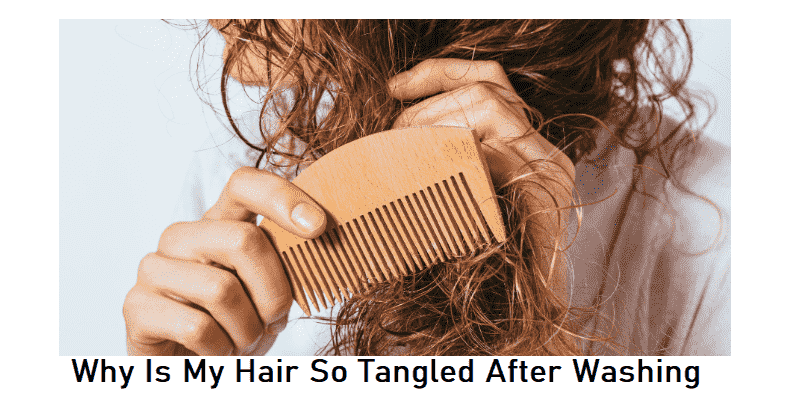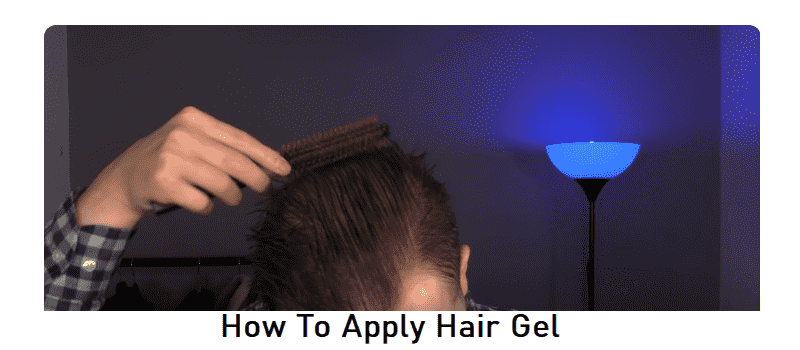Do you ever stand in front of the mirror and wonder why your hair is such a tangled mess after washing it? It can be incredibly frustrating, especially when you’ve just spent a few hours in the shower, scrubbing and conditioning your locks. In this blog, we’ll explore the reasons why your hair can become so tangled and how to prevent it from happening again.
Different hair types and how they can be affected by tangling after washing
Are you frustrated with your hair always becoming tangled after a wash? It’s a common problem, and understanding your hair type is key to reducing tangling. Different hair types react differently to washing, and this affects the tangling.
Fine hair is usually more prone to tangling, while coarse hair has more natural strength which resists tangles. Curly hair is more prone to dryness, which can lead to tangling.
Understanding your hair type, and using the right products to hydrate, nourish and protect it, can help reduce the chances of your hair tangling after washing.

Credit: ahaahair
Protecting hair from tangles while swimming
If you’re a swimmer, you know that one of the most annoying things is dealing with tangles in your hair after a swim. Whether you’re swimming in a pool, lake, or the ocean, your hair can become a tangled mess! It’s important to take steps to protect your hair from tangles while swimming, especially if you’re a frequent swimmer.
Here are some tips to help keep your hair tangle-free after a swim: 1. Avoid using harsh shampoos and conditioners that can strip the natural oils from your hair.
Instead, opt for a shampoo and conditioner specifically designed for swimmers. 2. Before swimming, wet your hair and apply a leave-in conditioner, which will help to keep your hair from tangling. 3. Wear a swim cap. This will help to keep your hair in place and prevent it from tangling while you swim. 4. After swimming, rinse your hair with fresh water to get rid of chlorine and salt. 5. Use a wide-tooth comb to gently detangle your hair. Start at the ends and work your way up. Following these tips can help to prevent your hair
How to choose the best shampoo and conditioner for preventing tangles
Having trouble with tangles after washing your hair? You may be using the wrong shampoo and conditioner. Choosing the right products for your hair type can make a big difference in preventing tangles.
To help you find the best shampoo and conditioner for your hair, here are a few tips you should keep in mind. First, consider your hair type.
Is it fine or coarse? Is it straight or curly? Different hair types require different products, so know what you’re working with. Second, look for products that contain natural ingredients like essential oils, which can help nourish your hair and make it easier to detangle. Finally, choose a shampoo and conditioner that are specifically designed for preventing tangles, as some products are better suited for this purpose than others. Following these tips can help you find the perfect shampoo and conditioner for your hair, and minimize tangles after washing.
Importance of using heat protectant products before using heat styling tools
Heat styling tools can be a great way to add some volume and texture to your hair, but without proper protection, it can leave your hair feeling dry and tangled. Heat protectant products are essential for preventing heat damage and keeping your hair looking beautiful.
These products help to shield your hair from the high temperatures of heat styling tools, reducing breakage and split ends. They also help to lock in moisture, making your hair easier to comb out after washing.
So, if you’re wondering why your hair is so tangled after washing, it could be due to a lack of heat protectant. Invest in a good heat protectant product to keep your hair looking and feeling its best.
Benefits of using natural oils to help nourish and protect hair from tangles
If you’re wondering why your hair is so tangled after washing, the answer may lie in the products you’re using. Many hair care products contain harsh chemicals that can strip your hair of its natural oils, leaving it dry and prone to tangles.
Using natural oils can help nourish and protect your hair from tangles and make it look and feel healthier. Natural oils like jojoba, coconut, and argan oil are rich in fatty acids, vitamins, and minerals that help nourish and protect your hair.
They also provide a natural barrier against heat and environmental damage, helping to reduce frizz and keep your hair looking smooth and shiny. Natural oils also contain antioxidants, which help to protect your hair from free radicals and other environmental stresses, keeping it looking and feeling healthier for longer.
Step-by-step guide for best practices for brushing and detangling hair
Are you struggling to deal with tangles and knots in your hair after you’ve washed it? If so, you’re not alone. Trying to detangle wet hair can be a frustrating experience.
Fortunately, there are some best practices for brushing and detangling hair that can help you get the job done quickly and easily. Here’s a step-by-step guide to help you out: 1.
Start by combing through the ends of your hair with a wide-toothed comb. Work your way up carefully towards the root of your hair, gently detangling as you go. 2. Apply a light leave-in conditioner to your wet hair. This will help to make the strands softer and easier to manage. 3. Use a soft bristled brush to detangle your hair. Work in sections, starting at the ends and working your way up to the root of your hair. 4. If you have curly or wavy hair, use your fingers to detangle it. This will help avoid creating frizz or breakage. 5. Once your hair is detangled, use a wide-toothed comb to brush through it. 6. Finish off by applying a

